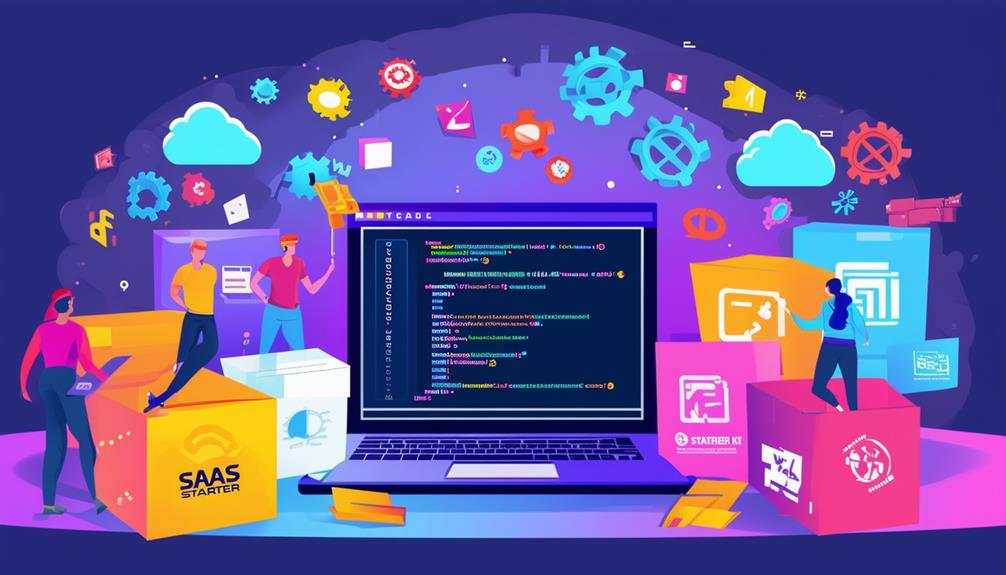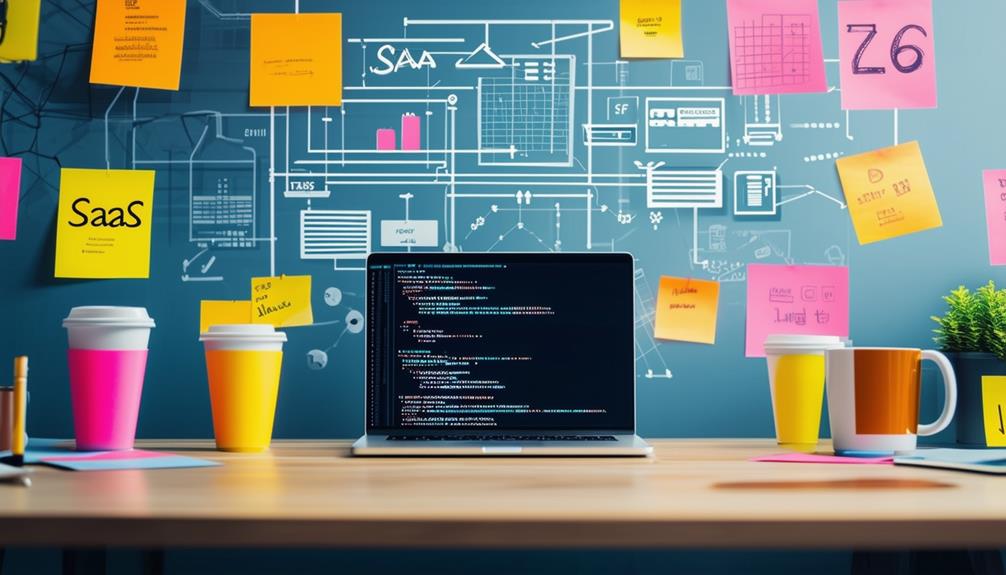When you’re starting on a SaaS project, boilerplates can be your secret weapon for rapid development and deployment. They offer pre-configured setups that can save you countless hours of initial coding and setup time. By leveraging these templates, you’ll bypass common pitfalls and focus on building your unique features from day one. However, choosing the right boilerplate is essential—it can make or break your project’s scalability and maintainability. With numerous options available, each catering to different tech stacks and business models, you’ll need to navigate carefully to find the perfect fit for your vision. The journey from selection to customization is where the real challenge—and opportunity—lies.
Understanding SaaS Boilerplates
While SaaS boilerplates can greatly accelerate your development process, it’s important to understand their core components and functionality before diving in.
SaaS boilerplates are pre-built templates that provide a foundational structure for developing Software-as-a-Service applications. They typically include vital features like user authentication, database integration, API endpoints, and basic UI components.
These templates are designed to address common challenges in SaaS development, such as scalability, security, and multi-tenancy. By leveraging a boilerplate, you can save up to 70% of initial development time, allowing you to focus on your unique business logic and features. However, it’s significant to choose a boilerplate that aligns with your tech stack and project requirements.
Key components of SaaS boilerplates often include:
- User management systems
- Subscription and billing modules
- API integration tools
- Scalable database architectures
Understanding these components will help you evaluate different boilerplates and select the one that best fits your needs.
It’s also important to take into account factors like community support, documentation quality, and the boilerplate’s update frequency to guarantee long-term viability for your project.
Benefits of Using Boilerplates
SaaS boilerplates offer numerous advantages that can greatly streamline your development process and accelerate time-to-market for your application. By using a pre-built foundation, you’ll save significant time and effort in setting up the basic infrastructure of your project. This allows you to focus on developing unique features and core business logic rather than reinventing the wheel.
Boilerplates often come with best practices and industry standards already implemented, ensuring your project starts on solid footing. They typically include essential components like user authentication, database integration, and API structures, reducing the risk of security vulnerabilities and architectural mistakes.
You’ll benefit from improved consistency across your codebase, as boilerplates provide a standardized structure and coding conventions. This consistency makes it easier for team members to collaborate and maintain the project long-term.
Cost-efficiency is another key advantage. By leveraging pre-built components, you’ll reduce development hours and associated costs. Additionally, many boilerplates are regularly updated, giving you access to the latest technologies and security patches without extra effort.
Lastly, using a boilerplate can help you scale your application more easily, as they’re often designed with scalability in mind from the outset.
Choosing the Right Boilerplate
With the benefits of SaaS boilerplates clear, you’ll need to carefully select the right one for your project’s specific requirements and goals.
Start by evaluating your technical stack preferences, as boilerplates often cater to specific languages and frameworks. Consider popular options like React, Vue.js, or Angular for front-end, and Node.js, Python, or Ruby for back-end development.
Next, review the boilerplate’s features against your project needs. Look for essential components such as authentication systems, database integrations, API structures, and scalability options. Check if the boilerplate includes robust security measures, as this is vital for SaaS applications handling sensitive data.
Examine the boilerplate’s community support and documentation. A well-maintained project with active contributors guarantees long-term viability and easier troubleshooting. Review the licensing terms to avoid potential legal issues down the line.
Don’t overlook the learning curve associated with each boilerplate. Choose one that aligns with your team’s expertise or offers thorough tutorials.
Setting Up Your Boilerplate
Once you’ve selected the ideal SaaS boilerplate for your project, it’s time to plunge into the setup process, which typically involves a series of essential steps to get your development environment up and running.
Begin by cloning the boilerplate repository from its source, usually GitHub or GitLab. Next, install the required dependencies using package managers like npm or yarn. This step is critical, as it guarantees all necessary libraries and frameworks are available for your project.
After installation, configure your environment variables. These often include API keys, database credentials, and other sensitive information. It’s important to keep these secure and separate from your codebase.
Next, set up your database connections and run any initial migrations or seeds provided by the boilerplate.
Review the boilerplate’s documentation thoroughly to understand its structure and any specific setup requirements. This may include configuring authentication systems, setting up cloud services, or integrating third-party tools.
Customizing Your SaaS Project
After confirming your boilerplate is functioning correctly, it’s time to tailor the project to your specific needs and vision.
Begin by customizing the user interface to align with your brand identity. Update the color scheme, typography, and logo in the configuration files or CSS stylesheets. Next, modify the authentication system to match your requirements, such as adding social login options or implementing two-factor authentication.
Focus on adapting the database schema to accommodate your unique data structures. Add or modify tables, fields, and relationships as needed. Update your API endpoints to reflect these changes, ensuring they’re RESTful and well-documented. Customize the user roles and permissions system to fit your SaaS model, defining access levels for different user types.
Integrate third-party services essential for your SaaS, such as payment gateways, email providers, or analytics tools. Implement proper error handling and logging mechanisms to facilitate debugging and monitoring.
To Wrap Up
You’ve now got the tools to jumpstart your SaaS project using boilerplates.
Remember, choosing the right template is essential for your success.
Once you’ve set up and customized your boilerplate, you’ll save significant time and resources.
Stay focused on your unique value proposition and user experience.
Keep iterating and improving your SaaS product based on user feedback and market demands.
With this foundation, you’re well-positioned to launch and scale your SaaS business efficiently.






